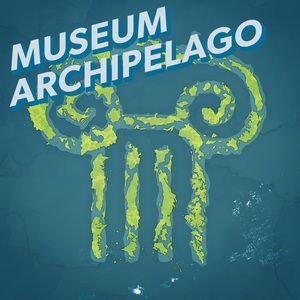Museum Archipelago
A tiny show guiding you through the rocky landscape of museums
Displaying all 3 Episode of Museum Archipelago with the tag “tallahassee”.
-
90. Civil Rights Progress Isn't Linear. The Grove Museum Interprets Tallahassee's Struggle in an Unexpected Setting.
March 15th, 2021 | 14 mins 53 secs
tallahassee
The Grove Museum inside the historic Call/Collins House is one of Tallahassee’s newest museums, and it’s changing how the city interprets its own history. Instead of focusing on the mansion house’s famous owners, including Florida Governor LeRoy Collins, Executive Director John Grandage oriented the museum around civil rights. Cleverly tracing how Collins’s thinking on race relations evolved, the museum uses the house and the land it sits on to tell the story of the forced removal of indigenous people from the area, the enslaved craftspeople who built the house, and the Tallahassee Bus Boycott.
Grandage says the museum’s interpretive plan and focus on civil rights wouldn't have been possible without the work of Black Tallahassee institutions like John G. Riley House Museum created by Althemese Barnes or the Southeastern Regional Black Archives built from FAMU Professor James Eaton’s collection.
In this episode recorded at the museum, Grandage describes how historic preservation has always been about what the dominant culture finds worth persevering, the museum’s genealogical role, and the white backlash to Collins’s moderate positions on civil rights.
-
86. Nashid Madyun Fights the Compression of Black History at the Meek-Eaton Black Archives
September 21st, 2020 | 13 mins 25 secs
tallahassee
History professor Dr. James Eaton taught his students with the mantra: “African American History is the History of America.” As chair of the history department at FAMU, a historically Black University in Tallahassee, Florida, he was used to teaching students how to use interlibrary loan systems and how to access rare book collections for their research. But in the early 1970s, as his students' research questions got more in depth and dove deeper into Black history, he realized that there simply weren't enough documents. So he started collecting himself, driving a bus around South Georgia, South Alabama, and North Florida to gather artifacts.
That collection grew to become the Meek-Eaton Southeastern Regional Black Archives Research Center and Museum on FAMU’s campus. Today, museum director Dr. Nashid Madyun presides over one of the largest repositories of African American history and culture in the Southeast.
In this episode, Madyun describes how the structure of the gallery fights the compression of Black history, how the archive handles dehumanizing records and artifacts, and how a smaller museum can tell a major story.
-
85. The John G. Riley House is All That Remains of Smokey Hollow. Althemese Barnes Turned It Into a Museum on Tallahassee’s Black History
August 31st, 2020 | 14 mins 54 secs
tallahassee
During the period of Jim Crow and the Black Codes, a self-sustaining Black enclave called Smokey Hollow developed near downtown Tallahassee, Florida. As the first Black principal of Lincoln High School, John G. Riley was a critical part of the neighborhood. In 1890, he built a two-story house for his family—only about three blocks from where he was born enslaved.
In the 1960s, the city of Tallahassee seized and destroyed the neighborhood as part of an urban renewal project through eminent domain. Riley's house was all that remained, thanks to activists who fought its demolition. Althemese Barnes was determined to not let the history fade: as founding director of John G. Riley Research Center and Museum, she transformed the building into a place where people can learn about Smokey Hollow.
In this episode, Barnes talks about creating a museum to connect with young visitors, the process of becoming familiar with Florida's museum organizations which are often resistant to interpreting Black history, and the long process of building a commemoration to Smokey Hollow in Tallahassee’s urban landscape.
